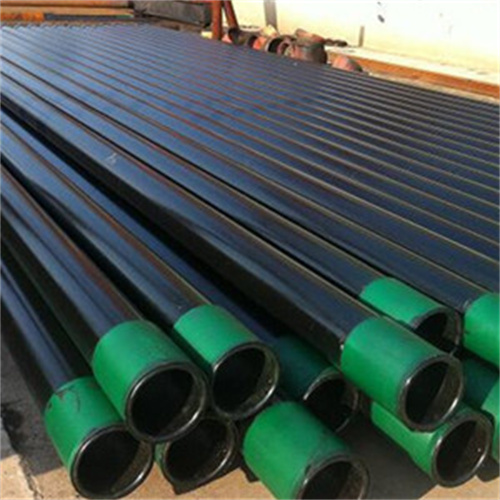Table of Contents
فوائد استخدام الأنابيب الملحومة الحلزونية المقاومة للتآكل لنقل البخار في محطات توليد الطاقة
تعتبر الأنابيب الملحومة الحلزونية المقاومة للتآكل مكونًا أساسيًا في محطات توليد الطاقة لنقل البخار. تم تصميم هذه الأنابيب خصيصًا لتحمل الظروف القاسية لبيئات البخار عالية الضغط، مما يضمن التشغيل الآمن والفعال لمرافق توليد الطاقة. هناك العديد من الفوائد الرئيسية لاستخدام الأنابيب الملحومة الحلزونية المضادة للتآكل في محطات الطاقة، مما يجعلها الخيار المفضل لتطبيقات نقل البخار.
إحدى المزايا الأساسية للأنابيب الملحومة الحلزونية المضادة للتآكل هي مقاومتها الفائقة للتآكل. في محطات توليد الطاقة، غالبًا ما يتم إنتاج البخار عند درجات حرارة وضغوط عالية، مما قد يؤدي إلى تسريع عملية التآكل في الأنابيب التقليدية. الأنابيب الملحومة الحلزونية المضادة للتآكل مطلية بطبقة واقية تمنع حدوث التآكل، مما يطيل عمر الأنابيب ويقلل الحاجة إلى الصيانة والإصلاحات المتكررة.

أهمية الصيانة والفحص المناسبين للأنابيب الملحومة الحلزونية المقاومة للتآكل في محطات توليد الطاقة
السبب الآخر الذي يجعل الصيانة والفحص المناسبين للأنابيب الملحومة الحلزونية المضادة للتآكل أمرًا بالغ الأهمية هو ضمان سلامة العاملين في المصنع. تعمل أنظمة نقل البخار في محطات توليد الطاقة عند درجات حرارة وضغوط عالية، مما يشكل خطر إصابة العمال في حالة فشل الأنابيب. ومن خلال إجراء عمليات تفتيش وفحوصات صيانة منتظمة، يمكن لمشغلي المحطات تحديد مخاطر السلامة المحتملة واتخاذ الإجراءات التصحيحية للتخفيف من المخاطر. وهذا لا يحمي القوى العاملة في المصنع فحسب، بل يساعد أيضًا في الحفاظ على بيئة عمل آمنة لجميع الموظفين.
بالإضافة إلى منع التآكل وضمان السلامة، يمكن أن تساعد الصيانة والفحص المناسبين للأنابيب الملحومة الحلزونية المقاومة للتآكل أيضًا على تحسين أداء محطة توليد الطاقة أنظمة. مع مرور الوقت، يمكن أن تصبح الأنابيب مسدودة بالحطام أو تحدث تسربات تعيق تدفق البخار. ومن خلال إجراء عمليات التفتيش الروتينية وفحوصات الصيانة، يمكن لمشغلي المحطات تحديد هذه المشكلات ومعالجتها، مما يضمن عمل أنظمة نقل البخار بأعلى كفاءة. لا يؤدي هذا إلى تحسين الأداء العام لمحطة الطاقة فحسب، بل يساعد أيضًا في تقليل استهلاك الطاقة وتكاليف التشغيل.
لصيانة وفحص الأنابيب الملحومة الحلزونية المقاومة للتآكل في محطات الطاقة بشكل فعال، يجب على مشغلي المحطة اتباع برنامج صيانة شامل. وينبغي أن يتضمن هذا البرنامج عمليات فحص بصرية منتظمة للأنابيب، بالإضافة إلى تقنيات الاختبار غير المدمرة مثل الاختبار بالموجات فوق الصوتية والاختبار الشعاعي للكشف عن العيوب الخفية. بالإضافة إلى ذلك، يجب على مشغلي المحطات أيضًا تنفيذ برنامج مراقبة التآكل لتتبع حالة الأنابيب بمرور الوقت وتحديد أي مجالات مثيرة للقلق.
علاوة على ذلك، يجب على مشغلي المحطات إعطاء الأولوية لإصلاح واستبدال أي أنابيب تالفة أو متآكلة لمنع المزيد من التدهور وضمان استمرارية موثوقية نظام نقل البخار. من خلال الاستثمار في الصيانة والفحص المناسبين للأنابيب الملحومة الحلزونية المقاومة للتآكل، يمكن لمشغلي محطات الطاقة إطالة عمر معداتهم وتحسين السلامة وتحسين الأداء. وفي نهاية المطاف، يمكن لهذا النهج الاستباقي لصيانة الأنابيب أن يساعد محطات توليد الطاقة على العمل بشكل أكثر كفاءة وفعالية، مما يضمن توليدًا موثوقًا للكهرباء لسنوات قادمة.
Anticorrosive spiral welded pipes play a crucial role in the steam conveyance systems of power plants. These pipes are designed to withstand high temperatures and pressures, making them essential components for the efficient operation of power generation facilities. However, like any other equipment in a power plant, anticorrosive spiral welded pipes require proper maintenance and inspection to ensure their longevity and performance.
One of the key reasons why proper maintenance and inspection of anticorrosive spiral welded pipes is important is to prevent corrosion. Corrosion can weaken the structural integrity of the pipes, leading to leaks and potentially catastrophic failures. In a power plant setting, where steam is used to generate electricity, even a small leak in a pipe can result in significant downtime and costly repairs. By regularly inspecting and maintaining anticorrosive spiral welded pipes, plant operators can identify and address corrosion issues before they escalate.
Another reason why proper maintenance and inspection of anticorrosive spiral welded pipes is crucial is to ensure the Safety of plant personnel. Steam conveyance systems in power plants operate at high temperatures and pressures, posing a risk of injury to workers in the event of a pipe failure. By conducting regular inspections and maintenance checks, plant operators can identify potential safety hazards and take corrective action to mitigate risks. This not only protects the plant’s workforce but also helps to maintain a safe working Environment for all personnel.
In addition to preventing corrosion and ensuring safety, proper maintenance and inspection of anticorrosive spiral welded pipes can also help to optimize the performance of power plant systems. Over time, pipes can become clogged with debris or develop leaks that impede the flow of steam. By conducting routine inspections and maintenance checks, plant operators can identify and address these issues, ensuring that steam conveyance systems operate at peak efficiency. This not only improves the overall performance of the power plant but also helps to reduce energy consumption and operating costs.
To effectively maintain and inspect anticorrosive spiral welded pipes in power plants, plant operators should follow a comprehensive maintenance program. This program should include regular visual inspections of the pipes, as well as non-destructive testing techniques such as ultrasonic testing and radiographic testing to detect hidden defects. In addition, plant operators should also implement a corrosion monitoring program to track the condition of the pipes over time and identify any areas of concern.
Furthermore, plant operators should prioritize the repair and replacement of any damaged or corroded pipes to prevent further deterioration and ensure the continued reliability of the steam conveyance system. By investing in proper maintenance and inspection of anticorrosive spiral welded pipes, power plant operators can extend the lifespan of their equipment, improve safety, and optimize performance. Ultimately, this proactive approach to pipe maintenance can help power plants to operate more efficiently and effectively, ensuring the reliable generation of electricity for years to come.

